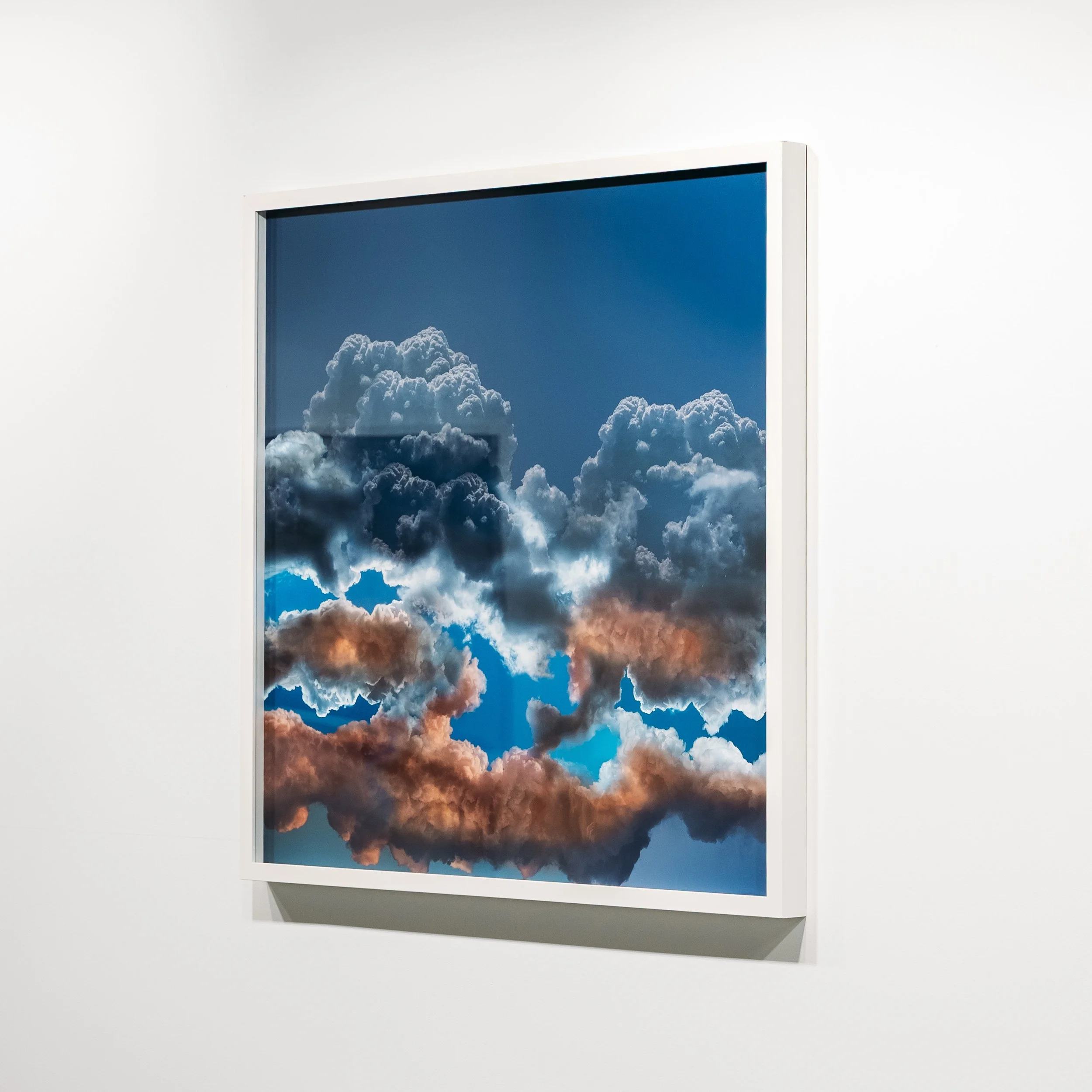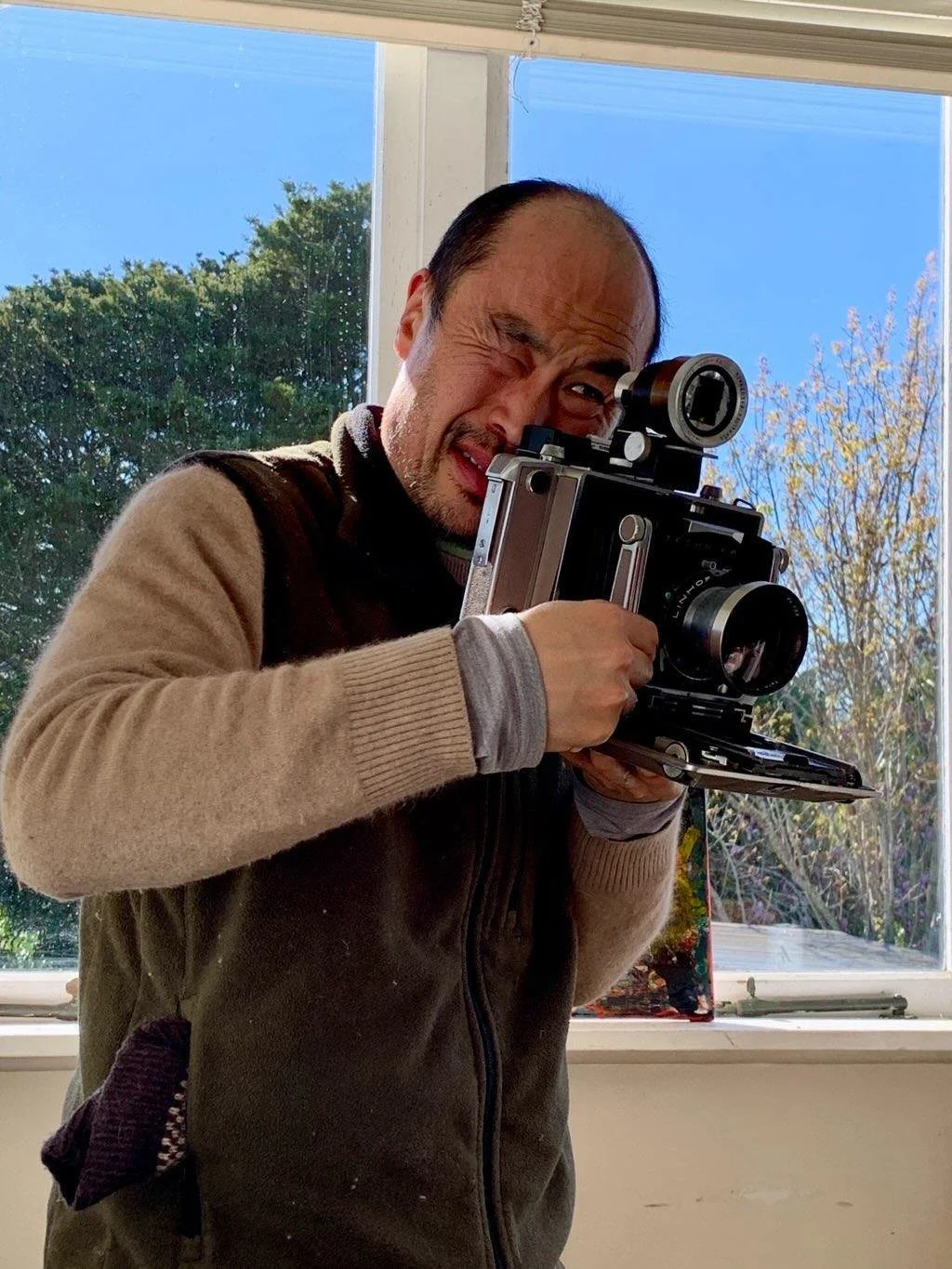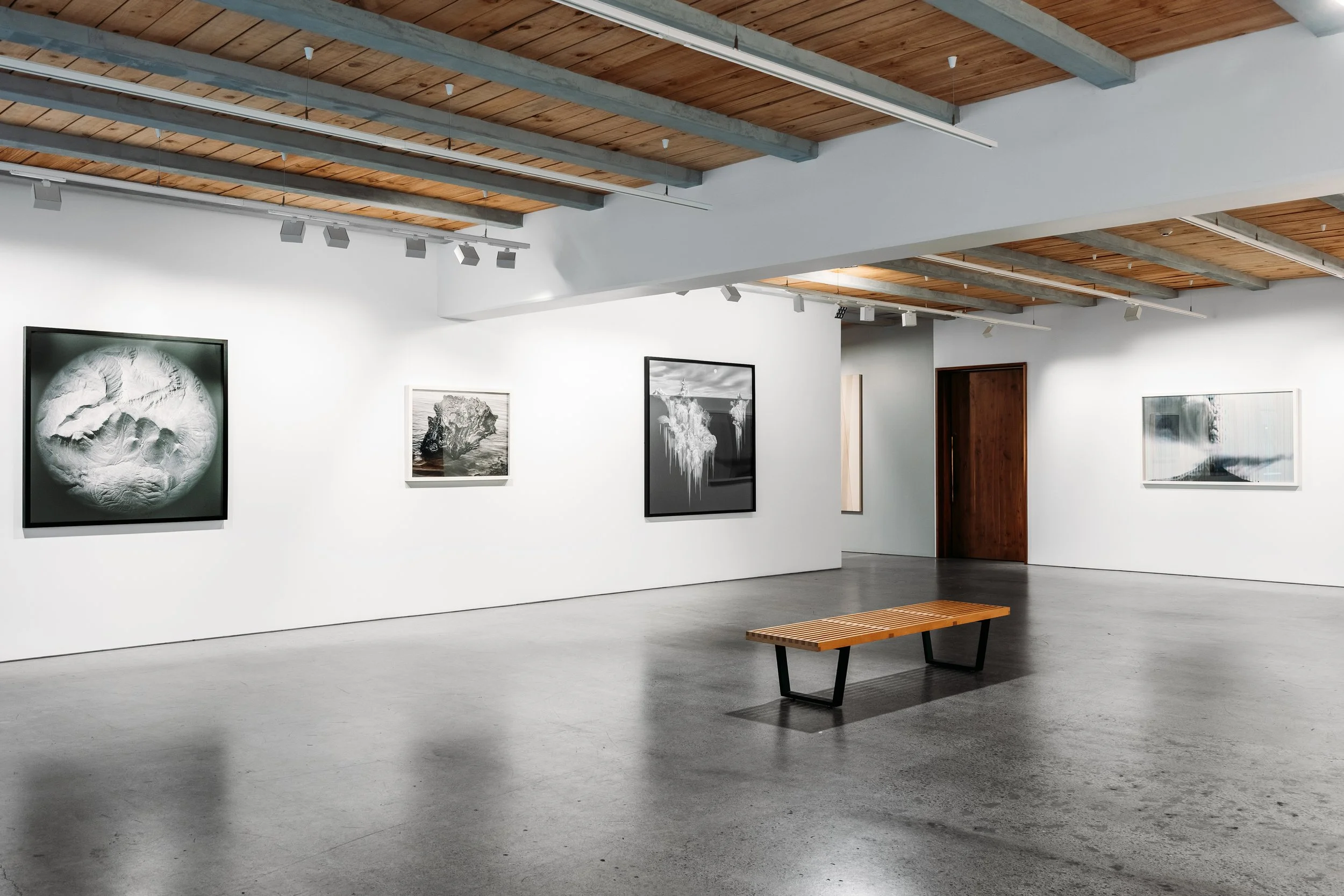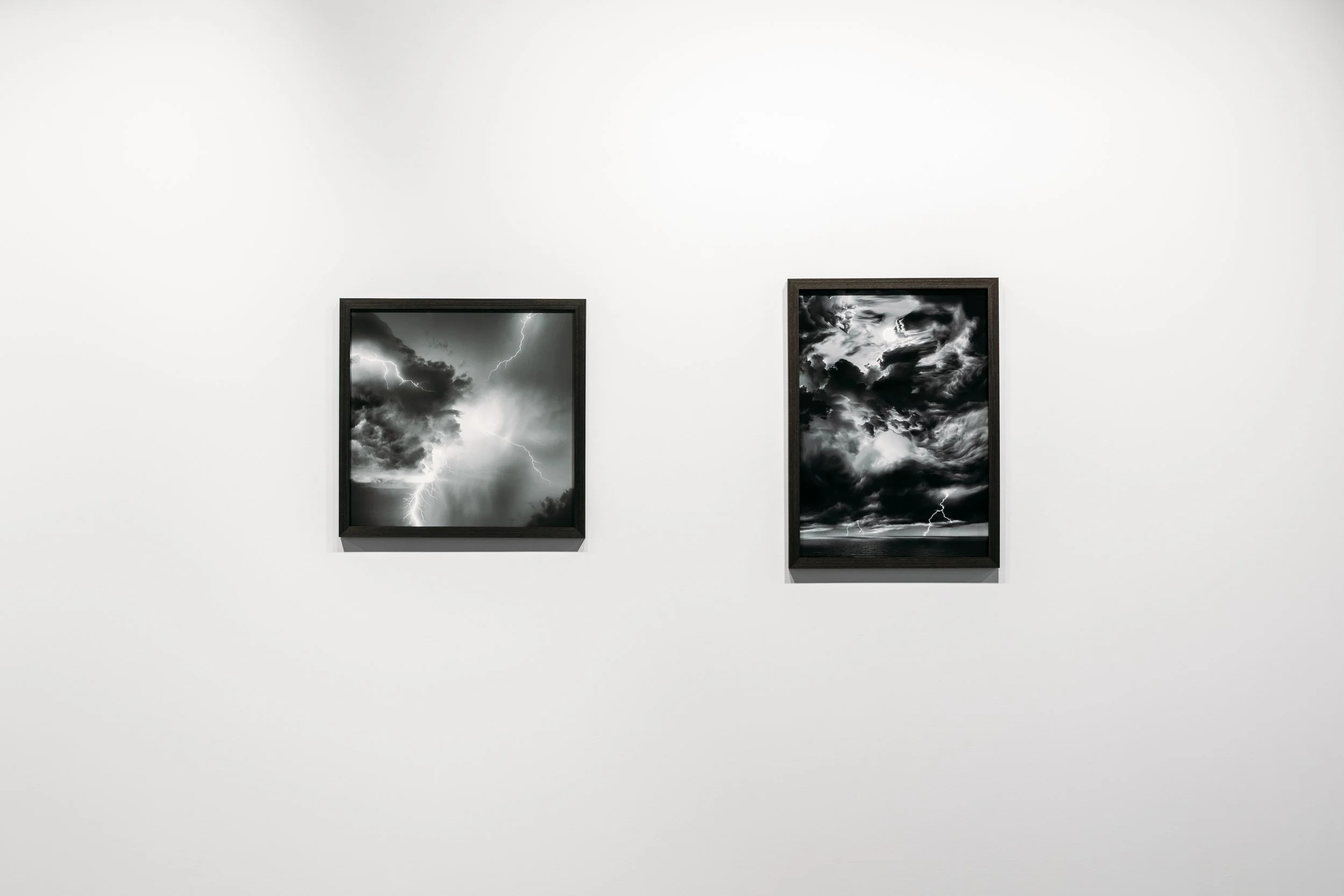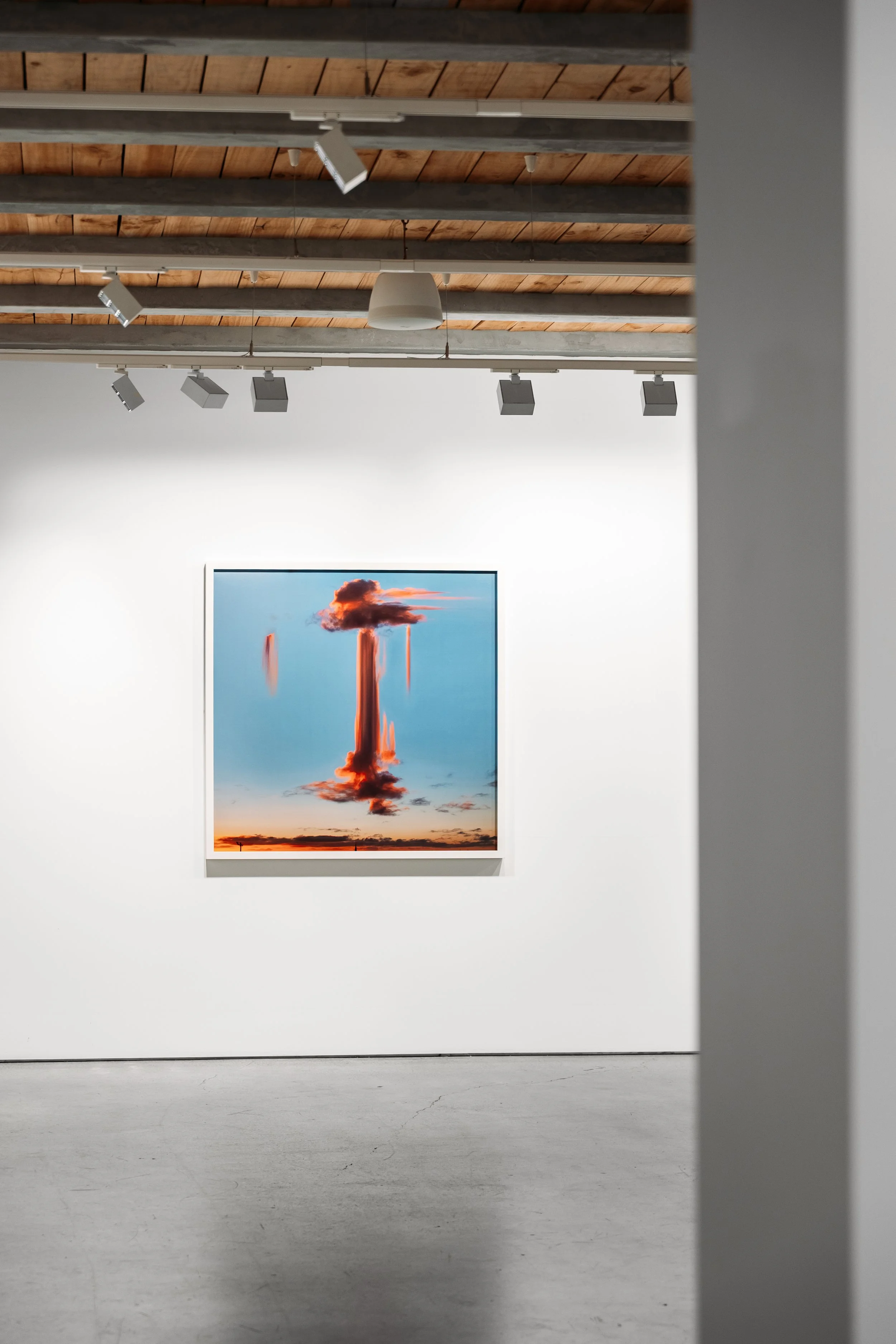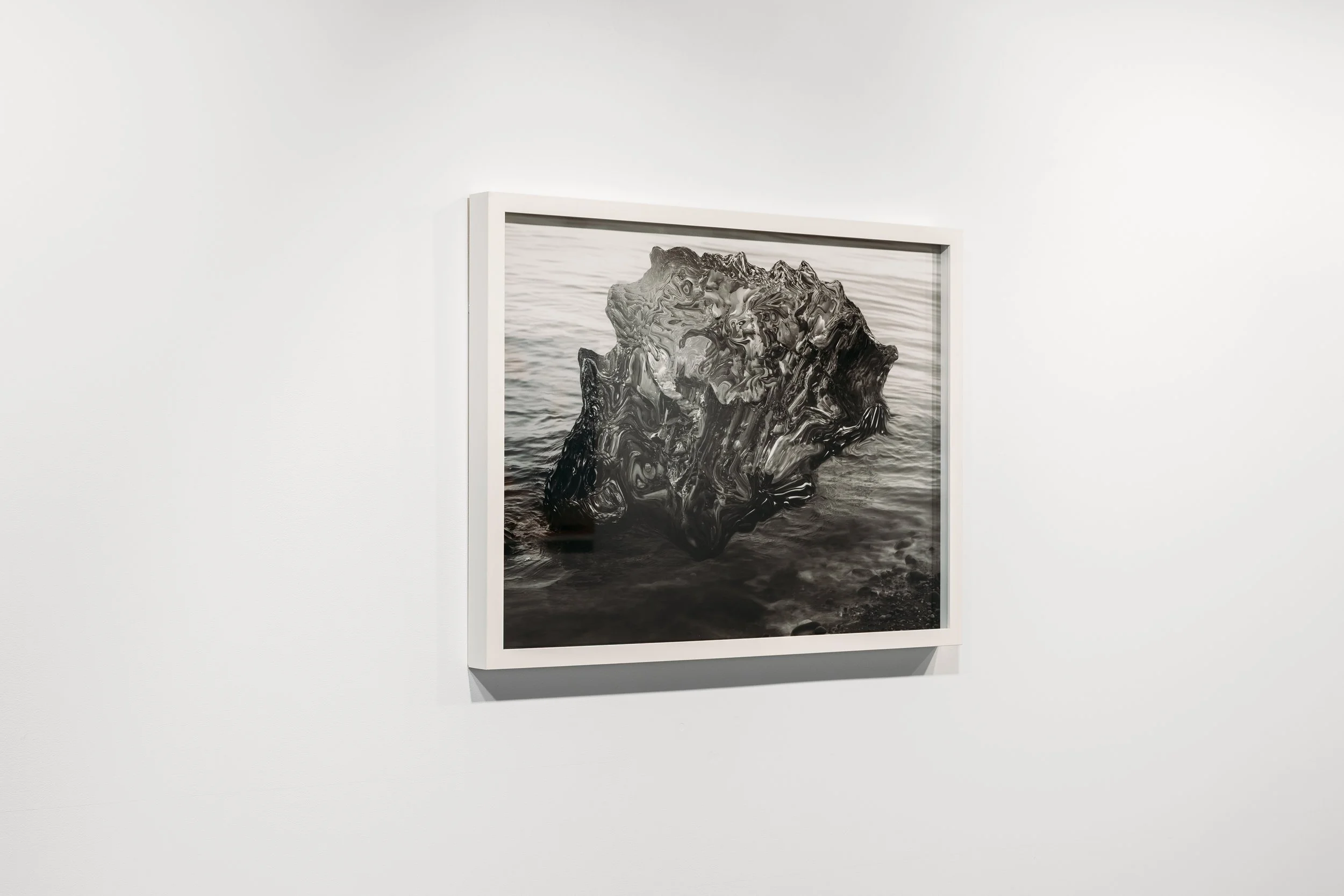Interview: Jae Hoon Lee - The Wanderers
Jae Hoon Lee forms part of The Wanderers a selling exhibition at Webb’s Wellington. We spoke to the artist about his trajectory, ideas and processes behind the works in this exhibition.
Webb’s: Your trip on the Antarctica New Zealand Arts Fellowship Programme to Scott Base in December 2011 was quite significant. Tell me a little bit about that experience and what do you feel have been the biggest overall changes in your practice since then?
Jae Hoon Lee: My time in Antarctica felt like an out-of-body – or even out-of-planet experience. It remains the most remote place I‘ve ever been to, not just geographically, but mentally and emotionally. The constant daylight disrupted all sense of time. My circadian rhythm lost its usual path, and sleep became strangely elusive, not quite like jet lag, but something more existential – a kind of temporal dislocation.
Scott Base is not near any penguin colonies, but one day I encountered a lone emperor penguin, separated from its group. I felt an immediate kinship with this solitary, alien figure. Like me, it seemed out of place – a stranger in a strange land. That moment stayed with me.
Being in such a vast, barren place with no trace of human civilization made me feel like a speck of dust, drifting in some unseen current of wind. Since that experience, my work has carried a deeper sense of dislocation, fragility, wonder and the enormity of nature. Antarctica changed my internal sense of scale and value. It taught me something about scale, solitude, and the quiet emotional gravity of nature.
Before this body of work, you were creating images composed of scanned bits of your own and others’ skin, which you digitally manipulated and layered in a painter-like process to explore the boundaries between private and public, real and virtual. What prompted your shift from these immersive ‘skinscapes’ into broader explorations of nature and landscapes?
In my early skinscape series, I used a scanner almost like a diary—recording daily changes on my own skin. I would scale these close-up images into large gallery projections, where pores, hairs, and textures became vast, immersive surfaces. There was a strange euphoria in that act—a sense of stretching beyond my physical limits, of seeing my body take on a new kind of presence. Audiences stood beneath what looked like abstract terrain, yet it was just my skin, expanded until it no longer carried a personal identity: not male, not Asian, not 173cm, 72kg—just a shifting, ethereal surface.
Initially, I focused solely on my own skin, but over time I began scanning others in public spaces—bars, galleries, performance venues—and digitally blending their textures with mine. Through layering and compositing, these fragments formed a continuous, shared surface that blurred the line between self and other, between real and virtual. The work explored the boundary between private and public, and questioned how identity dissolves in digital space.
Looking back, I think what drove me was a desire for transformation—to liberate the body from fixed meaning, to turn the intimate into the infinite. That journey naturally expanded. What began with a few square centimeters of skin has widened into vast landscapes, skies, oceans—as though the microscopic view of the body dissolved into a macroscopic view of the world. It reminds me of Gulliver’s Travels, but in reverse: starting from the tiniest detail and growing outward into a world that still feels strangely personal.
You have often talked about Buddhism as an important component of what you do. This idea of the ‘internal’ being one with the ‘external’ — which I guess goes back to its roots in Hinduism — is your art a personal process of trying to understand your place within the world (or viceversa)?
Through my creative process, I carefully gather images from many sources – scanning, photographing, capturing with drones. I then digitally stitch these fragments together, allowing places and moments that are physically distant to meet on the same surface.
In this way, my art becomes a kind of bridge – one that lets me come into contact with many parts of the world at once. It mirrors what I understand from Buddhism: that the boundary between self and world is an illusion. What matters is the interconnectedness of all things. My work gives me space to explore that connection – not just as an idea but as a lived, visual experience.
Through Eastern philosophy, such as Buddhism and Taoism, I’ve been learning how my internal being relates to the external world – how both reflect and nourish each other in a harmonious, continuous flow.
We spoke recently about the fact that some of the works in this exhibition come from images that you found online, rather than your more often used method of going out to physically be in a space to capture the raw material yourself. It’s quite a timely metaphor of how reliant we all are these days on someone else’s images to understand and experience the world.
Using found images frees me from the limits of physical access. I no longer need to stand in a place to feel connected to it – the digital space collapses distance and time, offering a kind of omnipresence. In this realm, the image is no longer tied to its origin. It drifts. It transforms. It loses authorship and gains autonomy.
My digitally recomposed works reflect this constant state of renewal. They exist in a loop – always becoming, never fixed. Technology, in this sense, is not a filter but a collaborator. It breaks open the boundaries between internal feeling and external world, allowing both to intermingle, dissolve, and reappear in unexpected forms.
We are all now experiencing the world through borrowed images. My work embraces that – not as loss, but as a new kind of presence.
How do you think your finished work is affected by one process vs the other (traveling vs not)?
Both processes - traveling and working from found images online – offer different platforms that deeply affect my final outcomes. When I travel, I’m physically immersed in the landscape, experiencing its atmosphere, sounds, and scale, which often influences my response to space in a more sensory and immediate way. In contrast, sourcing images online is a more self-directed, imaginative process. It feels like wandering through digital terrain, searching for fragments to be recycled or recomposited. Yet this, too, is led by a similar sense of awe and curiosity.
Interestingly, landscapes created from online sources often end up in black and white. This is intentional – I use grayscale to evoke a sense of timelessness. The original images are usually in colour, but by stripping away that present-tense vibrancy, I merge fragments from various sources into something that feels suspended between past, present and future. It’s as though I’m taking different trains, all heading in the same direction, but from different starting points.
Whether physically traveling or digitally exploring, both are driven by a desire to reach unknown or untouched places. The methods may differ, but the underlying pursuit of wonder and discovery remains the same.
Clouds and water feature prominently in this exhibition — from beautiful sunset ones to stormy ones. What attracts you to that subject matter?
I’m drawn to photographing natural elements like clouds, trees, mountains, and the ocean because they reflect my inner self. The sky, especially, constantly shifts — from mellow summer sunsets to sudden storms- much like my own mood and emotions. Living in New Zealand, I often see how quickly a clear sky can turn dramatic. My Skyscape series captures these subtle, daily changes in cloud patterns, which mirror the internal changes I feel. In this way, I find a deep connection between the external weather and my inner emotional landscape.
Jae Hoon Lee is part of the selling exhibition The Wanderers scheduled to take place at Webb’s Wellington 14.10.25 — 08.11.25. He will be exhibiting alongside Yon Yi Sohn and Paul Hartigan.
Selling Exhibition
The Wanderers: Jae Hoon Lee + Yon Yi Sohn
14.10.25 — 08.11.25
Location
Webb's Wellington Gallery
23 Marion Street, Te Aro, Wellington
Contact
Virginia Woods-Jack
Exhibitions Manager
virginia@webbs.co.nz
M +64 22 679 8664

